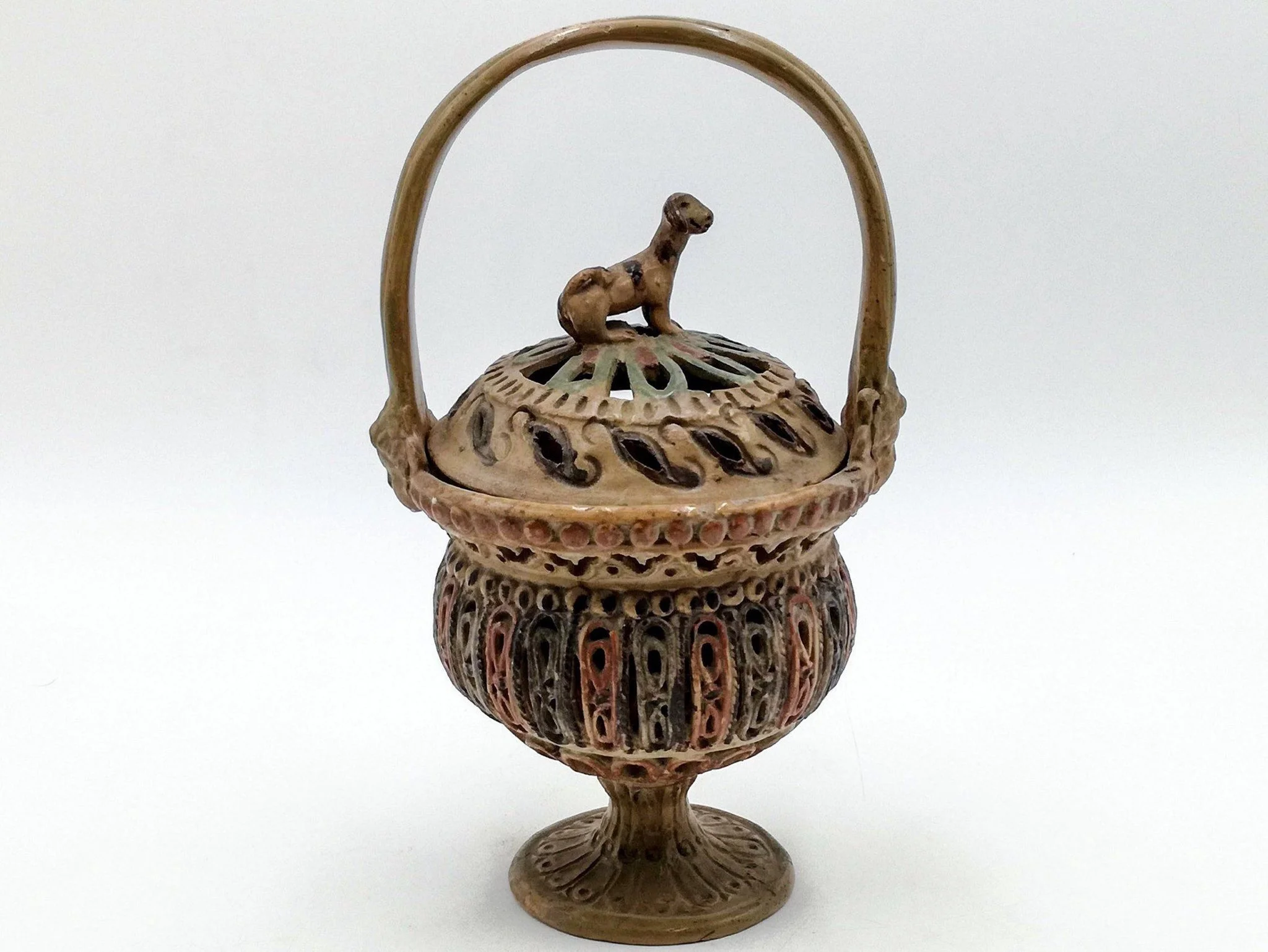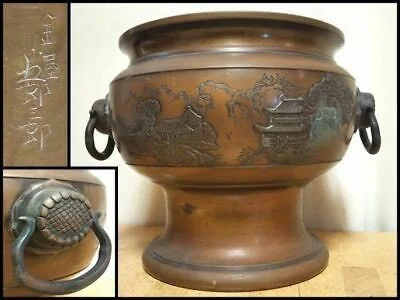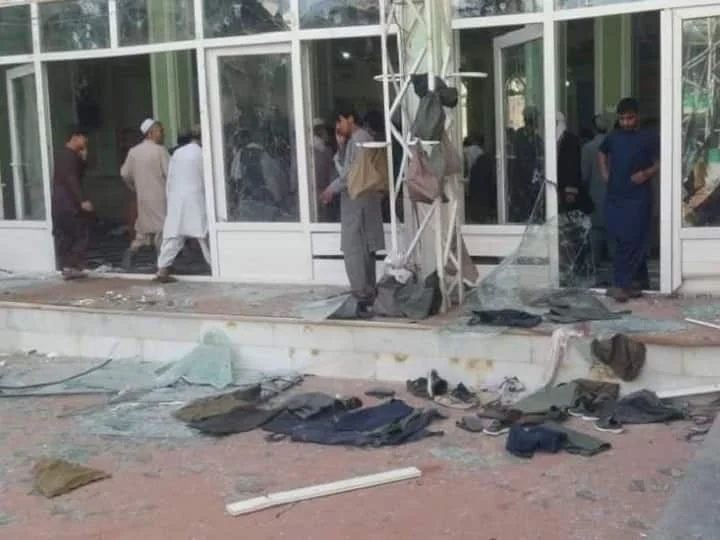
By Khan Khawar Achackzai
KANGER, a fire pot that Kashmiris use to keep warm in chilling winters. In Kashmiri literature Kanger is considered as one’s beloved. Moti Lal Saqi writes in praise for Kanger: “Kashmir and Kanger are each others’. Present the brazier anywhere and at any time you identify Kashmir.”
The word ‘Kanger’ according to De Hultzseh seems to be derived from the word ‘Kasthangarika”. Auriel Stein also agrees that it is derived from the same word. Dr. W.F Elmslie, a well known missionary observed that the Kashmiris probably learnt its use from the Italians who accompanied the retinue of the Mughal emperors. In winters no lower middle-class woman in Florence walks outside without carrying Scaldino, which according to GMD Sufi resembles the ‘Kanger’.

However a few historians and authors go back to the twelfth century to trace its usage and origins. In ‘The Symbolism of East and West’ (1900), Mrs. Murray Aynsley comments on the work Eugen Hultzch and observes that he “has shown that the use of portable fireplaces or braziers was known in in Kashmir – as early as the twelfth century C.E., and here we have their use in Persia (and if [Pietro] Della Valle‘s word tennor be right, in Arabia also), as well as in Spain and Italy, in a manner implying a long previous history.”
A similar vessel is also used in Japan. Although it is not clear when Japanese braziers were first used, the oldest existing Japanese brazier is believed to be one known as ‘Dairiseki sei Sankyaku tsuki Hoya’ (three-legged marble hoya) stored in the Shoso-in treasure repository.
The Japanese pocket stove is much advanced. It employs a specially prepared fuel with origins in ancient experiments to produce a slow match for preserving fire for a long time. The pocket stove is made of copper or tin with a perforated lid and is designed to fit the wearer. The cartridges of special charcoal are filled in it and lighted up and the lid is closed and the user enjoys that warmth for half a day with the special Japanese charcoal.

Chinese stove is quite similar to that of Kashmiri Kanger in that it consists of a ceramic pot which is encased in small bamboo sticks. The whole structure is balanced upright on a wide base so as to prevent tipping over. The French have a corresponding to it in their “Chauffer chemic” or pot of charcoal fire. But there are contestations from old historians about the origin of Kanger from the Italians and they maintain the existence of Kanger or Bazier was as early as twelveth century C.E because Kalhana used the word “Hasantika” in Rajtarangni.

Similar Baziers are available in Iran, Arabia, Spain and Italy as already mentioned above in Mrs. Murray’s quote. Delle-Valle’s word tenor or perhaps ‘Tannur’ in Arabia or in present times in Kashmir the word ‘Tannuri’ is an indication that such Baziers were used worldwide.
However, the Kashmiri crafting technique is new. Kanger has mainly three parts, the innermost earthenware to the ‘Kundal’, the outer woven grills of Kani branches got out of witch hazel (Parrotia jacquemontiana), the plant known as ‘pohh’ in Kashmir and to a ring attached to it at its back hangs the chain or ‘Tsalan’, sometimes made of wood sometimes made of metal. There are various types of Kangers according to decoration, durability and antiquity. These include “Run-dar Kanger”, “Sarposh Kanger”, “Zajeer” and “Zeenadar” Kanger.
One of the crude forms of Kanger is called “Manun” mainly used by the boatmen. Among famous Kangers are: ‘Bandapur Kanger”, “Islambaed Kanger” and “Tsar Kanger”. ‘Isband Soz” is actually a brazier to emanate scent to the assembly of invitees or “salars” on happy occasions.
In its historical development, Kanger has assumed a political significance and an emotional iconography. In ancient Kashmir when courtiers used to deliberate over the succession issue of the kings, Kanger was hurled at the opponents.
On the first day of ‘Hartal’ following the theft of sacred relic from Hazratbal Shrine, people collectively assaulted a leader with their Kangers at the Amirakadal Chowk. During the early nineties, those carrying Kangers in their Pherans (cloaks) were often subjected to friskings and searches by Police and Army, possibly because the pout inside the pheran gave them an impression of some weapon being carried.
With all its emotional, cultural and political significance, Kanger has found a mammoth mention in Kashmiri art and literature. A famous Kashmiri poem reads: “Mann me zolum lolle naaren,
Tan me zejim Kangre.
Waare warey praye khejim,
Maye lejim Kangre.”
My soul is burnt by the fire of love,
And my skin by the fire of Kangir.
The fire has made me so sluggish as in incubation,
I am lovestruck with my Kangir.
Kanger remains beloved to the Kashmiri from time immemorial and will continue doing so. Historian Hassan Kuihami writes: “What Laila was to Majnun’s bosom, so is the Kanger to a Kashmiri”.
- The author is a Doctor and Writer/Columnist
Follow this link to join our WhatsApp group: Join Now
Be Part of Quality Journalism |
Quality journalism takes a lot of time, money and hard work to produce and despite all the hardships we still do it. Our reporters and editors are working overtime in Kashmir and beyond to cover what you care about, break big stories, and expose injustices that can change lives. Today more people are reading Kashmir Observer than ever, but only a handful are paying while advertising revenues are falling fast. |
| ACT NOW |
| MONTHLY | Rs 100 | |
| YEARLY | Rs 1000 | |
| LIFETIME | Rs 10000 | |











